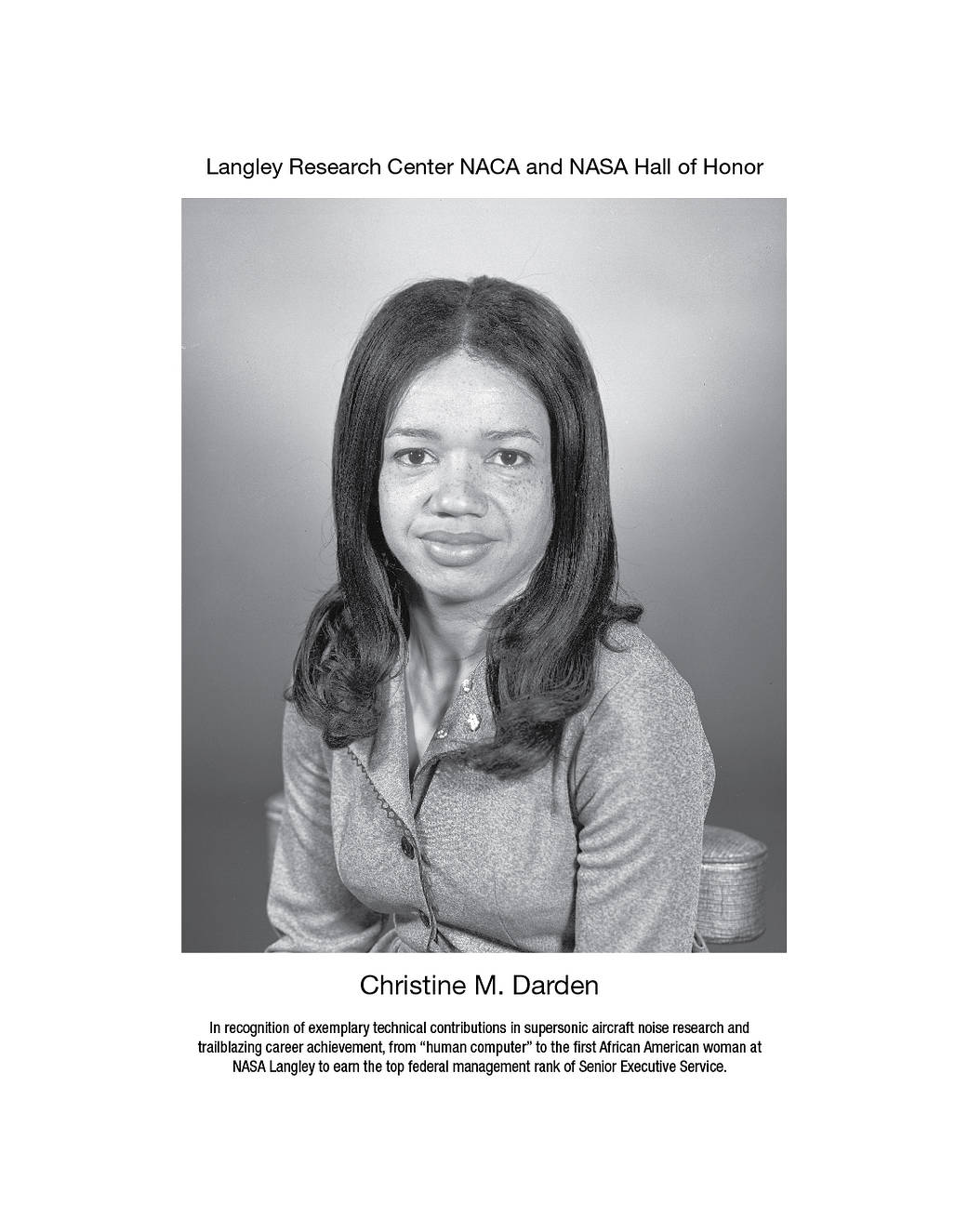
Christine M. Darden
Dr. Christine Mann Darden (1942-) is internationally known for her research into supersonic aircraft noise, especially sonic boom reduction, and recognized for her groundbreaking achievement as the first African American woman at NASA Langley to be appointed to the top management rank of Senior Executive Service. She is equally known for her efforts to inspire and educate generations of aerospace scientists and engineers.
Born in Monroe, North Carolina, Darden graduated with a bachelor’s degree in mathematics in 1962 from what is now Hampton University. She earned a teaching certificate and briefly taught high school math before she went on to Virginia State University, where she earned a master’s in applied mathematics and also taught the subject there. Darden came to NASA Langley in 1967 as one of the last of the generation of “human computers.” These were female mathematicians, many of them African Americans. She was one of the amazing Langley women featured in the book, “Hidden Figures.”
After crunching numbers for six years, Darden was promoted to aerospace engineer, where her first assignment was to write a computer program for sonic boom – the sound associated with shock waves created by an aircraft flying faster than the speed of sound. That assignment led to a 30-year career in flight research, specializing in supersonic noise characterization, analysis and reduction. She also continued her education, receiving a doctorate in mechanical engineering from George Washington University in 1983.
By 1989 Darden was the sonic boom group technical lead for NASA’s High Speed Research Program. She and the team worked on designs to decrease the environmental effects of supersonic aircraft, including noise and atmospheric pollution. Darden and the team also developed sonic boom prediction and other analysis codes used extensively by the aerospace industry in aircraft designs in the late 20th century.
In 1999 she became the director of NASA’s Aero-Performing Center Management Office where she was responsible for Langley research in air traffic management and aeronautics programs managed at other NASA centers. Darden also worked with Langley’s Strategic Planning Office and was the head of Langley’s Strategic Communications Office at the time of her retirement in 2007.
Darden is the author of more than 50 publications in the field of high lift wing design in supersonic flow, flap design, sonic boom prediction and sonic boom minimization. She has been active in several organizations including as an associate fellow of the American Institute of Aeronautics and Astronautics (AIAA), secretary of the Aeroacoustics Technical Committee of the AIAA, Beta Kappa Chi National Scientific Honor Society, Kappa Mu Epsilon Honorary Mathematics Society, the National Technical Association, and the Sigma Pi Sigma Physics Society.
Among the awards Darden has received are the Lifetime Achievement Award from Women in Aerospace, the Black Engineer of the Year Award for Outstanding Achievement in Government, the NASA Outstanding Leadership Medal, and the NASA Equal Opportunity Medal. In 2019 the United States Congress gave her a Congressional Gold Medal, Congress’ “highest expression of national appreciation for distinguished achievements and contributions by individuals or institutions.”

























